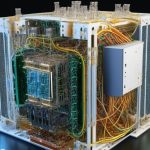Telecoms KPI, Contributors to Poor KPI and Improvement plans
Table of Contents
What is NSS
Network switching subsystem (NSS) (or GSM core network) is the component of a GSM system that carries out call switching and mobility management functions for mobile phones roaming on the network of base stations. It is owned and deployed by mobile phone operators and allows mobile devices to communicate with each other and telephones in the wider public switched telephone network (PSTN). The architecture contains specific features and functions which are needed because the phones are not fixed in one location.

WHAT IS KPI
A Key Performance Indicator is a measurable value that demonstrates how effectively a company is achieving key business objectives. Organizations use KPIs at multiple levels to evaluate their success at reaching targets.
Telecommunication KPI tells the performance of the network on a daily/weekly/monthly basis, which helps to improve the network, so that operator & customers enjoys the service at its most.
HOW IS PERFORMANCE DATA COLLECTED?
Performance history data is collected on the Disk space mounted on the Mobile Switching Center (MSC) System Administration Module (SAM). A Wireless Element Manager (WEM) client provides remote Java GUI or Web interface to view both history and current performance data. All MSC history files are saved to dual disks for redundancy, In case of active SAM failure data can still be accessed from the newly active SAM.
SOME KEY PERFORMANCE PARAMETERS WHICH HIGHLY EFFECTS NETWORK PERFORMANCE
- Network Overall ASR (Answer Seizure Ratio).
- Location Update Success Rate.
- Paging Success Rate.
- Handover Success Rate.
- Erlang / Mobile Network Traffic
These parameters need to be monitored continuously for smooth functioning of mobile telecommunication network.
Answer Seizure Ratio (ASR)
It is the ratio of the number of successful calls over the total number of outgoing or incoming calls from a carrier’s network (i.e. On a route or a Destination Point Code (DPC) basis, and during a specified time interval, the ratio of the number of seizures that result in an answer signal to the total number of seizures: ITU-T E600/2.14).
ASR is line seizures that are answered by person or device divided by total number of seizures.
Seizure is achieved after a successful “Call setup”. It means seizing a trunk circuit for conversation or other network services. In GSM network, it refers to seizing a Traffic Channel (TCH) after a successful “Call setup”.
A successful call is a call that is answered by a called party or machine (e.g., fax machine, answering machine, e.t.c.).
ASR is a very important telecom industry parameter because it directly relates to Revenue (Money).
OUT GOING (OG) ASR = (out going answered)/(out going attempt)
INCOMING (IC) ASR = (out going answered)/(out going attempt)
| Answer Seizure Ratio (ASR) | Intranetwork | = 50% |
| Internetnework | = 45% |
(NCC.org.ng 2015)
However, ASR at 30% is also acceptable
The rest percentage is left considering Subscriber Behaviour i.e. miss call, no answers after long ring, etc.
Points to be closely monitoring for improvement of ASR :
Point of interconnect (POI) Utilization (maybe a need for more transport media e.g E1’s/T1’s or STM1 are required for expansion to ease congestion on the path).
Selection of Routes, (e.g. avoid loop routing, always negotiate call routes with peer MSCs)
CIC (Circuit) Hunting e.g. Odd-Even Selection or Sequential Routing. (or top-down or down-top selection of circuit identity codes (CICs) for the pair MSCs or NEs)
Unallocated Numbers, e.g. subscriber which are churn (De-active), should be deleted regular basis.
Proper Announcements, so that Subscriber won’t re-attempts again and again.
CIC matching ( CIC alignment) should be done with other operator (or pair MSCs as the case may be)
Avoid Network Elements (e.g. MSC) congestion.
Location Update Success Rate
Location update success rate is the number of Successful Location Updates w.r.t. Total Number of Location Updating Attempts; This parameter is calculated for 24 Hrs. Its standard value = 90% according to NCC regulation (ncc.gov.ng 2015)
LUSR = 100*(Number of successful location updates) / (Total Location Update Success Rate)
Major contributor for decreasing LUSR:
- Congestion in SS7 Signaling.
- Incorrect IMSI definition of IMSI analysis in Switch.
- Incorrect roaming subscriber definition in Switch. (MSRN declaration in the switch for a particular reachable DPC i.e pair MSC) SDDCH Congestion.
- LU timers setting.
- Network Synchronization problem.
Location Update Success Rate Improvement Plan
- Continuous Monitor of SS7 Signaling utilization and it should be optimizing as much as possible.
- Correct definition of IMSI and Roaming Subscriber.
- For Narrow Band Signaling the utilization should not go above 0.3 Erl. & for High Speed Signaling the utilization must be kept below 0.4 Erl (Per time slot).
Paging Success Rate
It is the rate of successful page responses to First and Repeated Page Attempts to a location area w.r.t. Number of Initial and Repeated Page Attempts to a location area. This parameter is calculated for 24 Hours. Its standard value >= 80% – 90%.
PSR = (Number of Page responses to first page to an LA + Number of Page responses to repeated page to an LA) / Number of Page Attempts to an LA (Location Area).
OR
PSR = (first paging response + repeated paging response) * 100/first paging request).
Major contributor for decreasing PSR
- Improper Paging / LU (Location Update) related parameter setting.
- O&M issue e.g Outages.
- Lower Random-access channel (RACH) success rate.
- Air Interface Issues like Interference, SDCCH Congestion, etc. Footprints.
- Paging overload on BSC i.e. paging capacity of BSC compared with the actual paging.
- Congestion on A-bis interface i.e. Paging command from BSC is delivered to BTS via A-bis.
Paging Success Rate Improvement Plan:
- Paging / LU timers setting, like Paging Timers in MSC must longer than Paging Timer in BSC (prolonging 1st and repeated page) and also paging strategy (local vs global), or repeated page on/off.
- LAC optimization.
- Paging / LU related parameter setting like increasing paging capacity through uncombined BCCH, changing Access grant and MFRMS (multiframe) parameters.
- Address Coverage issues.
- Check Discard/Paging queue on cell level.
- Hand Over Success Rate
Hand Over Success Rate is the mechanism that transfers an ongoing call from one cell to another as a user moves through the coverage area of a cellular system, it could be INTRA-CELL, INTER-CELL, INTER-BSC OR INTER-MSC.
The handover success rate shows the percentage of successful handovers of all handover attempts. A handover attempt is when a handover command is sent to the mobile.
HOSR = (Successful Incoming Inter-Cell Handover + Successful Outgoing Inter-Cell Handover) / (Incoming Inter-Cell Handover + Outgoing Inter-Cell Handover)
Major contributor for decreasing HOSR:
- C/I Ratio (Carrier-to-Interference ratio), Lower value gives Worst Connection Quality.
- High Interference, Co-Channel or adjacent i.e., High Bit-Error Ratio.
- Bad Antenna Installation.
- Bad Radio Coverage.
- Incorrect Locating Parameter Settings.
- Insufficient Planning in Certain Areas.
- Repeated Handover between two base stations, caused by rapid fluctuations in the received signal strengths from both base stations.
- -Necessary Handover often leads to Increased Signaling Traffic.
Improvement Plan for HOSR:
- Updating & Optimizing Neighbors list.
- Removing Neighbors which have fewer no of HOs and cells having poor HOSR,
- same BCCH+BSIC Combination.
ERLANG, MOBILE TRAFFIC & UTILIZATION

What is ERLANG?
Erlang is named after Danish telephone engineer A. K. Erlang, Its a dimensionless unit of traffic intensity. One erlang is the intensity at which one traffic path i.e. one circuit would be continuously occupied.
It is equivalent of one call (including call attempts and holding time) in a specific channel for 3600 seconds in an hour. The 3600 seconds need not be, and generally are not in a contiguous block.
Example :
Suppose 60 calls happens in one hour, each lasting 5 minutes,
Minutes of traffic in the hour = number of calls x duration = 60 x 5 = 300
Hours of traffic in the hour = 300/60 = 5
Traffic figure = 5 erlangs.
Switch Erlang
Network designers use the erlang to understand traffic patterns within a voice network and use the figures to determine how many lines are required between a telephone system and a central office (PSTN exchange lines), or between multiple network locations.
Hence there exist different “erlang models”
Example In a Network, a traffic erlang model is adopted that each a subscriber contributes 15 milli-erlang (15 *10-3 Erlang). Thus the traffic on the switch at any particular moment is the total number of active subscriber x 15 *10^-3 Erlang. thus an MSC with one million subscribers attached has an erlang capacity of 15*10^-3*1000000 = 15000 erlang.
Total traffic = Incoming Erlang (IC Erl) + Outgoing Erlang (OG Erl)
IC Erl = Incoming usage time/900
OG Erl = Outgoing usage time/900
Utilization
Trunk utilization = Total traffic/CCT in-service
CCT in-service = Resources – OOS CCT
Written by Onwuka Ugochukwu
Contact us today or Join our Newsletters to get updates
Please post your comments and questions below.




nice write up